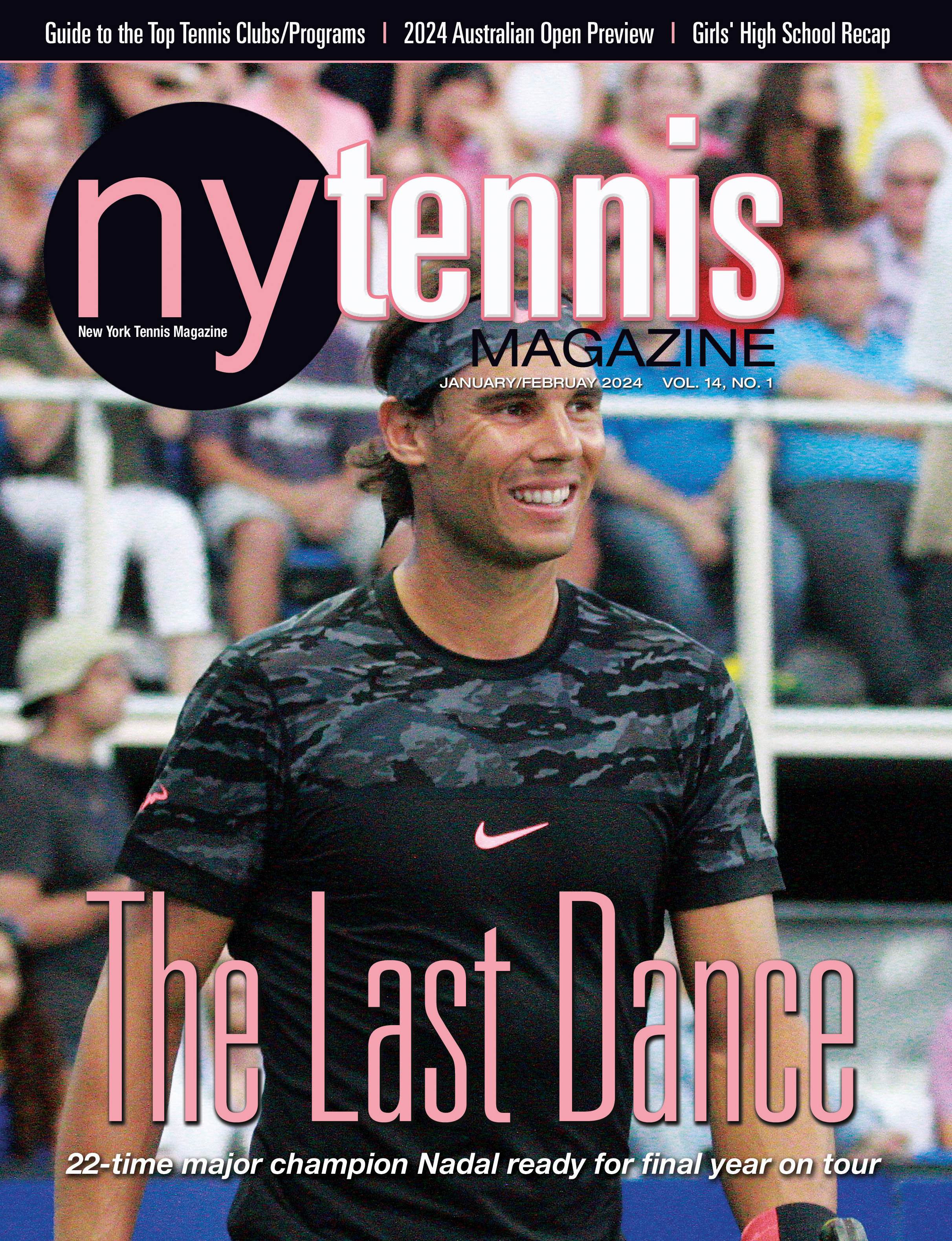What Makes a Tennis Pro Tick?
USTA/WTA pro Christina McHale tells it like it is
Christina McHale says movement is strength. That makes perfect sense, considering her favorite shot is her forehand. McHale trains at the USTA National Training Center, headquartered in Boca Raton, Fla. where she also participates in kids clinics at the $1.8-million Tennis Center at Boca West Country Club. The Country Club is a recent recipient of the USTA Outstanding Tennis Facility Award.
New York Tennis Magazine caught up with the aggressive baseliner while she was on tour. McHale, whose tips are gender neutral said, “The nice thing about tennis is it’s a sport that can be played by everyone.”
What are your top five fitness tips for tennis players?
McHale: Number one: Core. Everything starts with the core, and although we are rotating a lot, working on building core strength is critical.
Number two: Speed and endurance. Working on speed around the court is a must, as is endurance training with short sprints and footwork drills.
Number three: Hydration. Staying hydrated is important at all levels, but especially if you are playing in hot climates. Dehydration is dangerous, so stay hydrated with plenty of water and/or energy drinks.
Number four: Flexibility. Stretch every day. Tennis players must be able to get full rotation on strokes and easily move around the court. Look at Serena Williams’ splits, for example.
Number five: Variety. Tennis can feel quite repetitive on the court. Add in other sports to vary your training, such as warming up by kicking a soccer ball.
How do you prepare for a big match?
McHale: On match days, it’s all about having a routine and staying calm and focused. I have a good warm-up on the court with my coach. I eat chicken and rice or pasta before the match, and then get into my match gear. I have some quiet time, listen to music and then make sure all of my equipment is set. I'll warm my body up again right before the match and prepare myself mentally.
Share a few tournament experiences that amateurs can learn from.
McHale: You hear tennis players often say, “It’s important to focus on one point at a time, one match at a time.” Sometimes it gets a little boring to hear that for tennis fans, but it’s the truth. Every single point is an opportunity, so you just need to really take your time in-between points. I’ve won matches where I’ve been far behind and match points down, and I’ve lost matches where I’ve had really big leads. It’s not over until the last point is played.
How do you see the role of women evolving in the tennis world?
McHale: I think it’s great that the WTA [Women’s Tennis Association] has been led by a woman, Stacey Allaster [WTA chairman and CEO] for the past six years, and that the USTA is now also led by a woman. There are women tournament directors around and now more female coaches are starting to appear too.
What do you consider the single greatest achievement in your career up to now?
McHale: Competing at the 2012 London Olympic Games was the highlight of my career. To represent my country was a huge moment for me. I really tried to make the most of being there, surrounded by amazing athletes. My top 10 wins have meant so much to me, and reaching the final of my first WTA tournament in Acapulco.
Can you give us your thoughts on this year’s U.S. Open?
McHale: I did not have a good tournament at this year’s U.S. Open. I was so excited to play because I was playing well going in and I felt ready to do well at my home Grand Slam. Unfortunately, I wasn’t able to impose my game when I had the chances. It’s really tough to go out early at a tournament that means a lot to you, but I always try to turn my defeats into positive lessons and learn from them.







